Posted to ABS-CBN Blog (Nov 9): On eve of APEC Summit, PH leaders ignore cost of 'development' on social margins (by Inday Espina-Varona)
As the Philippines rolls out the red carpet for leaders of Asia-Pacific Economic Cooperation member-states, its own indigenous peoples are in the spotlight as advocacy groups worldwide ponder how to stop “development” from bulldozing society’s margins.
A decades-long battle for the rich earth and the minerals beneath lies at the root of the upsurge in conflict across a huge swathe of Mindanao’s heartland in southern Philippines.
At the center are the Lumad, non-Muslim indigenous peoples. The Lumad, with a population estimated at 7 million, have fought for centuries against new migrants, retreating in the face of superior arms and socially engineered influx.
On the last frontiers of the Philippines’ “island of promise,” they are making their last, fierce, desperate stand against government-approved mining operations and plantations.
Above them are crags unfit for the cultivation of food. Below them are the teeming urban centers that annually reap the deadly harvest of runaway development. Around them are armed groups of all stripes, battling for their hearts and minds.
GLOBAL SUPPORT
Of the more than 60 indigenous folk killed under the Aquino administration, 53 are Lumad, from the last parcels of pristine highlands that are targets of applications for mines and plantations.
The Philippine government largely frames the Lumad problem as an offshoot of Asia’s longest-running communist insurgency. Peace and social welfare national executives fret over the ballooning number of Lumad evacuees but are mum on the causes of displacement.
There have been 14 victims of four massacres. Four of the slain were minors, according to the human rights group Karapatan.
Throw in Lumad advocates, rights workers and environmental activists and the number of extra-judicial killings in Mindanao jumps to 144.
More than 70 indigenous people’s organizations across Asia have signed a statement, calling on Philippine government– host to this year’s APEC summit – to end the killings.
Joan Carling, secretary-general of the Thailand-based Asia Indigenous People’s Pact (AIPP), says at least 13 Lumad, indigenous peoples of Mindanao in the southern Philippines, have been killed this year — four every three months — by either state soldiers or paramilitary troops.
Forty thousand people, more than half of them minors, have been displaced by military and paramilitary operations. There have been 188 attacks on schools, hundreds of reported cases of harassment, including and arbitrary detentions, illegal arrests and torture, with children among the victims. Around 8,000 Lumad are now in evacuation camps.
Read: Children are war targets in PH’s last frontiers
These grim figures barely hint at the real cost of the war for occupation of the indigenous people’s lands.
DISPLACEMENT
From 46,000 to 50,000 government troops – 55 battalions, excluding engineering and intelligence units and those involved in civilian-military relations – are stationed in Mindanao.
The AFP, after decades of officially taking a back seat to the Philippine National Police (PNP) on matters of internal security, have taken the helm once more in the last phase of President Aquino’s term.
Their official goal: to break the backbone of the Communist Party of the Philippines/New People’s Army.
Under the Whole of Nation approach, lifted right out of the US Special Forces’ manual of operations, almost the entire civilian bureaucracy has subsumed the delivery of basic services to fit the military agenda.
In the last year of Mr. Aquino’s rule, Mindanao’s landscape looks no different from the war laboratories under the Marcos dictatorship or his scorned predecessor, Gloria Macapagal-Arroyo.
Military officials alternate between calling the victims of rights violations rebels and claiming the killings are an offshoot of a tribal war between anti-communist and pro-communist rebels. To an economist and consultant of the AFP’s pacification campaign, any Lumad killed must be considered an NPA rebel.
It is a claim that flies in the face of the Commission on Human Rights (CHR) acknowledgement that the August and September incidents in Pangatucan, Bukidnon and Lianga, Surigao del Sur were clearly extra-judicial killings.
National officials complain about the “unsanitary” conditions of the Lumad evacuation camps and the presence of children. But they remain silent on the cause of evacuations.
Lumad have thumbed down the solution broached by the social welfare secretary– resettlement – saying this comes straight from the playbook of those out to take their lands.
Read: Displaced Lumad nix resettlement; vow no surrender of ancestral lands
BIRDS OF PREY
Mr. Aquino pledged to overturn or “straighten” the errors of the Arroyo administration. Yet his government has adopted his predecessor’s vision of turning one of Mindanao’s most impoverished and conflict-prone region into Asia’s mining capital.
To the embattled Lumad, the main difference is in the land area now controlled by big corporations.
Mining concessions sprawl across more than 500,000 hectares of Mindanao. Eighty percent of these mines are on Lumad lands. Plantations account for 700,000 hectares, 12% of the island’s agricultural land.
These landmarks of economic development, combined with the Marcos government’s logging concessions-award binge to cronies, have gobbled up Mindanao’s forest cover, from 70% in 1900 to just six percent in 2011.
Areas in Mindanao that seldom experienced floods in the past now annually suffer deaths in the thousands, with huge boulders and felled logs crashing down into entire townships.
In the Caraga province of Surigao del Sur, reports of violence against the Lumad happen in areas of the fiercest resistance to mines and plantations.
“In the last three years, every time the soldiers come to our villages, they always demand that Mapasu, our organization, gives up its resistance against mining,” according to Michelle Campos, daughter of slain Lianga Lumad leader Dionel Campos.
Michelle also lost a mentor on the same day her father died. Emerito Samarca, the head teacher of Alcadev, an award-winning Lumad alternative school, was found dead in the school’s main building on September 1. Campos' killers had held him back as they forced students and teachers out of the compound.
Mapasu means “persevering struggle for the next generation” in English. The 22 communities under it are among the last holdouts against mining and plantation concessions in the 60,000-hectare Andap Valley complex.
The Andap Valley, which sprawls across nine municipalities, hosts the biggest remaining coal block reserve in the world. It is also rich in gold ore.
More than 6,200 hectares in Lianga are counted in the blocs of approved mining applications for mineral production sharing under Philex Gold Philippines Inc. and Rosario Mining Development Co., Rosario Consolidated Mining Corporation, and Sta.Irene Mining Corporation.
Philex, is known to have caused the Philippines’ historically largest mine disaster in its mining project in Padcal, Benguet.
Another mining giant, Benguet Corp also has a coal contract that includes Lianga, aside from Marihatag and San Miguel towns.
Aside from Surigao del Sur, the provinces of Surigao del Norte and Agusan del Sur are also rich in coal, according to the Mines and Geosciences Bureau. The Department of Energy has given the green light to the establishment of coal plants in Surigao del Sur.
RICH EARTH, POOR FOLK
The Mapasu community around Alcadev was famed for its self-sufficiency, which came courtesy of the counsel of Samarca and fellow agriculturists.
The school’s 16-hectare compound produces enough crops to feed more than a hundred boarding students and teachers the whole year round. Two other farms, including a village cooperative, produce the surplus that Lumad use to start livelihood in crafts.
The Lianga Lumad have trained a big number of indigenous health workers who volunteer in remote communities that have never seen government medical units. They even sent relief volunteers to provinces hit by super typhoon Haiyan, bringing food from their farms.
Yet that model has always been under siege. Mapasu has paid a high price for its independence and resistance. On Oct. 24 last year, Campos’ predecessor, Henry Alameda, was killed, also in front of his child.
One of the paramilitary men identified in Alameda’s killing surfaced in the aftermath of Campos’ death at a press briefing inside the AFP’s headquarters in Camp Aguinaldo.
Malacañan’s national security cluster also hosted a gathering for bloggers to present Belandres and three other pro-government datus.
Belandres blamed communist rebels for the Lianga massacre. The ex-rebel, who admitted having killed former comrades, demanded that Mapasu turnover its “communist datus” for an “internal Lumad peace pact” so that indigenous peoples could live in peace again.
Yet Belandres does not distinguish between the NPA and civilians, insisting supporters fall under the category of combatants.
When bloggers raised the possibility of Mapasu members standing firm against the entry of mining firms, Belandres called it a communist ploy.
The other pro-military datus in the gathering echoed the message repeatedly heard by Michelle: Mining is good for development and only communists would refuse that. A senior AFP commander in Mindanao also complained to an international human rights worker about stubborn Lumad who do not see the benefits mining firms can give to their communities.
Even back in 2009, military operations served the interests of mining firms. A report by Bulatlat.com said cited Lodestar Consolidated Holdings as recipient of the rights to mine 6,000 has. in Andap Valley. Opposition by Mapasu led to massive military deployment – and major evacuations by the Lumad.
RESISTANCE
There is little doubt that the Andap Valley hosts communist rebels. A study by a church group in the1980s said a loose alliance between the NPA and Lumad was able to limit the entry of extractive activities and logging concerns.
Some timber concessions remain in the Andap Valley but Lumad resistance – strengthened by rebel presence – have kept their gold, copper, chromite and coal reserves intact.
Now plantations are making greater inroads into the area. Belandres said his group has asked the government to reward them with livelihood – rubber and palm oil plantations.
Palm oil plantations of Filipinas Palm Plantation Incorporated (FPPI); Agusan Plantation Inc. (API); Dole-Philippines & Sumitomo Fruits (SUMIFRU) already cover almost 15,000 hectares in Caraga.
The new anti-plantation alliance, REAP, says oil palm plantations have doubled their spread in Mindanao from 23,478 hectares to 42,731 hectares in the last 10 years.
Rubber plantations expanded threefold, from 81,667 hectares in 2005 to 214,314.6 hectares by 2014.
On paper, Caraga is a “model for development.” It has eight wood-based companies and 15 hydropower projects. It hosts 23 of the country’s 48 large operating mines — 20 nickel mines, 2 gold mines, 1 chromite mine and 1 cement quarry.
Kalikasan reports that seven percent of the region’s land area is covered by mineral production sharing agreements (MPSA). The government has also granted 23 existing exploration permits. Thirty applications are pending for production sharing agreements.
The department of environment in 2011 reported that mining projects in Caraga generated more than 1B taxes and fees. Official government statistics say poverty incidence dropped to 34.1% in 2012 form 43 % in 2009, raising its rank from poorest region to sixth poorest.
Yet, the indigenous populations earlier displaced by existing mining concerns remain on the margins. They make do with seasonal work while struggling with damage to the environment and the loss of their culture — supplanted by the politics of patronage imposed by government and big business.
Those who labor to present an alternative to the government’s approved models, in turn, find themselves facing the barrels of its guns.
http://www.abs-cbnnews.com/blogs/opinions/11/09/15/on-eve-of-apec-summit-ph-leaders-ignore-cost-of-development-on-social-margins

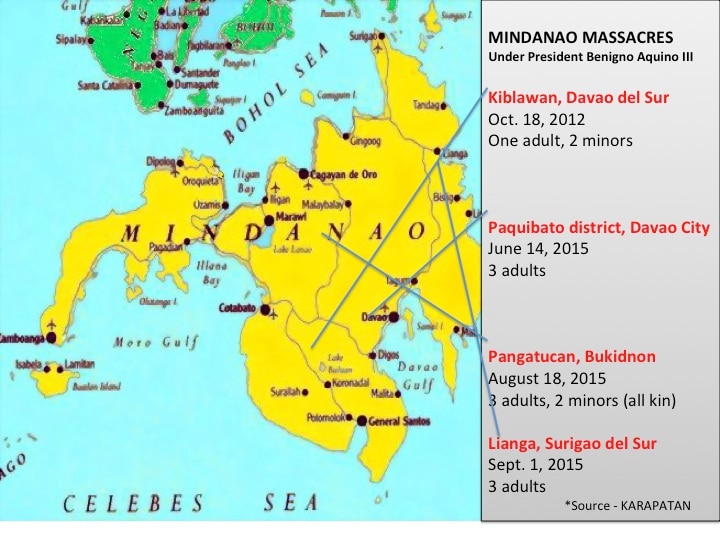
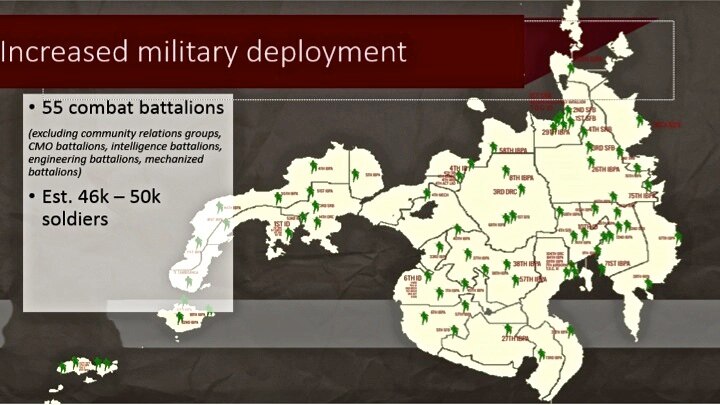
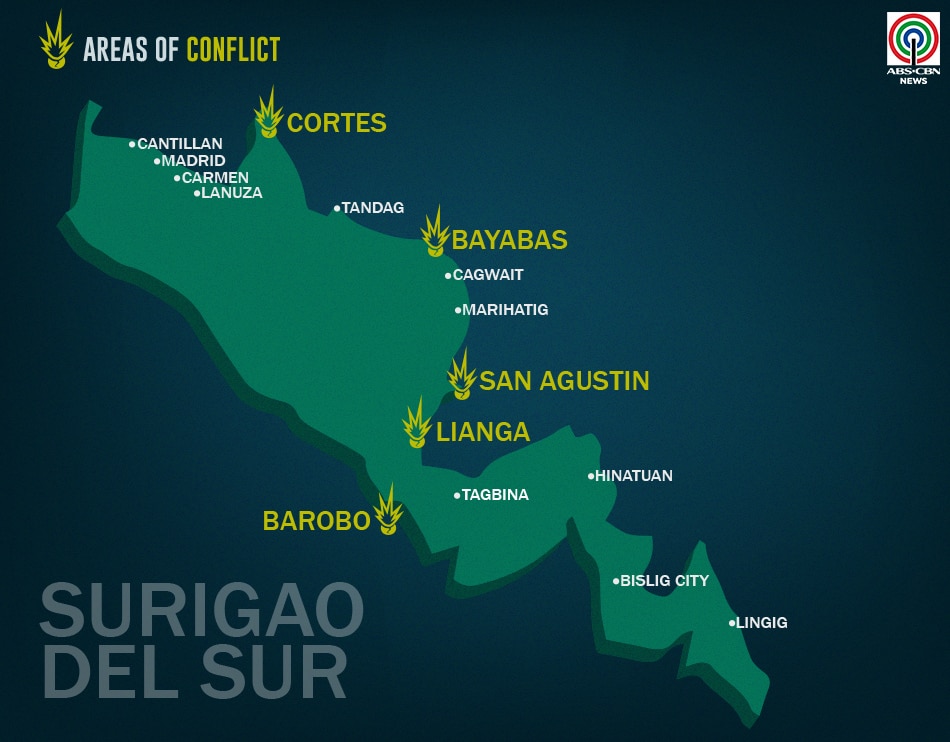
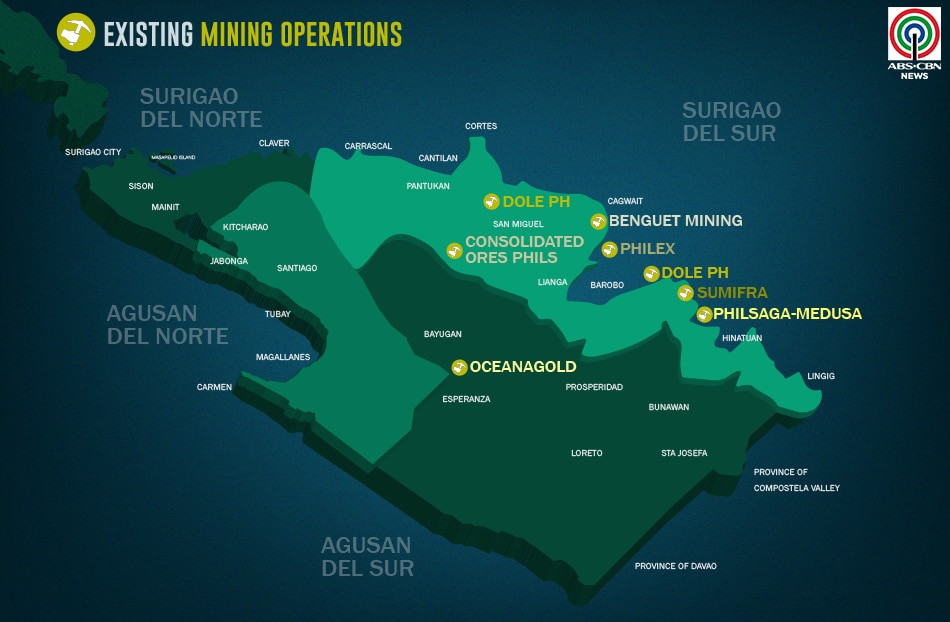
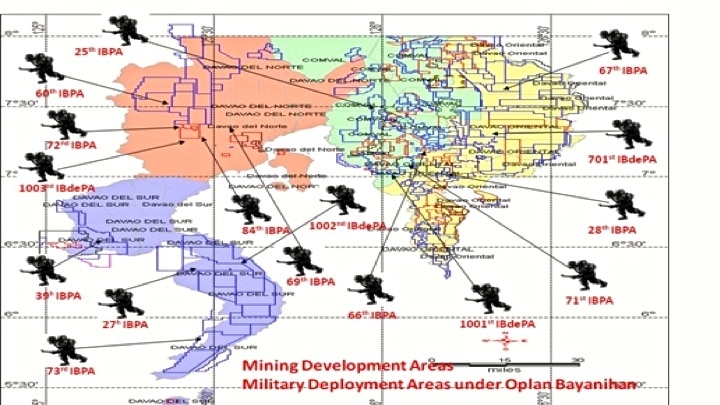
Now some anonymous observers have characterized Inday Espina-Varona as being an asset of the CPP/NF/NPA something that she denies and other media organizations have objected to. She describes herself as being a “liberal” but it would appear that she is more leftwing than an ordinary liberal.
ReplyDeleteEspina-Varona cites, and apparently accepts without question, human rights statistics and opinions put out by known Communist Party of the Philippines (CPP) front organizations. She uses statistics and a chart prepared by KARAPATAN (The Alliance for Advancement of People’s Rights), the main CPP-linked human rights umbrella front organization in the Philippines. KARAPATAN’s main goal is to discredit the Philippine government and military on human rights issues.
She also cites statistics from Joan Carling, purportedly “the secretary general of the Thailand-based Asia Indigenous People’s Pact (AIPP)” in order to foster the perception that even independent international organizations have noted the human rights violations committed against the lumad in the Philippines. The problem is that Joan Carling is not an independent international source. Carling has also been identified as the secretary general of the Cordillera People’s Alliance (CPA), a regional front organization of the CPP.
Espina-Varona also incorporates several charts along with the arguments attributed to the main CPP-associated multisectoral umbrella front group, the Bagong Alyansang Makabayan (BAYAN-New Patriotic Alliance).
She also references KALIKASAN, a CPP-associated environment front group; Bulalat, the online pro-CPP propaganda outlet; and MAPSU (Malahutayong Pakigbisog Alang sa Sumusunod-Preserve the Struggle for the Future), yet another suspected CPP-linked lumad front organization.
She admits the Andap Valley Complex is a CPP/NPA stronghold and then seems shocked that the military would maintain such a robust presence in the area.
Espina-Varona almost seems to praise the NPA when she says “Some timber concessions remain in the Andap Valley but Lumad resistance – strengthened by rebel presence – have kept their gold, copper, chromite and coal reserves intact.” But she fails to mention the cost of that NPA presence, well over 300 lumad leaders/datus killed, mainly over opposition to the rebel presence in their areas and over money, i.e. who ultimately controls they payments to lumad leaders by multinational corporations.
And finally, she argues that “To an economist and consultant of the AFP’s pacification campaign, any Lumad killed must be considered an NPA rebel.” Espina-Varona fails to take note that the opposite is true with regard to CPP/NPA-linked front organizations. To them every rebel killed is just an innocent civilian and every encounter between the AFP and the NPA that results in insurgent KIA then automatically becomes a “massacre.”